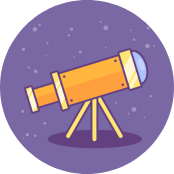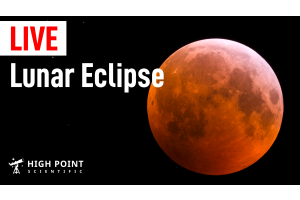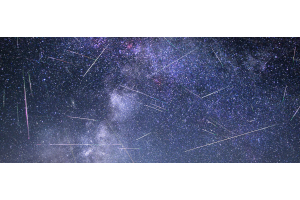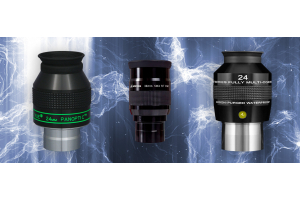
If there’s one thing that draws almost every observer, with or without a telescope, it’s the Moon. It’s understandable; it’s frequently easily seen in the evening sky and, with its changing phases, it’s been an object of fascination for millennia. Nowadays, with the inexpensive and easy availability of telescopes, more and more people are turning their attention toward it. But what, exactly, can you see on the Moon?
Seas, Faces, Earthshine, and Craters

Let’s start with the easy stuff. Look up at the Moon on almost any night and you’ll immediately notice the dark markings on its surface. The ancient astronomers, without the equipment or knowledge we possess today, believed them to be seas and named them appropriately. Individually, each “sea” is known by its Latin name, as a mare (pronounced “marr-ay”). Collectively, these seas are known as maria (“marr-ree-ah”).
The reality is that there are no seas (or any kind of liquid water) on the Moon. These dark areas are ancient lava plains formed by volcanoes that once erupted on the very young Moon, some three to four billion years ago.
The most famous of the seas is Mare Tranquillitatis, the Sea of Tranquility. It’s here, on July 20th, 1969, that Apollo 11 landed and Neil Armstrong became the first man to walk on the Moon. Other maria have equally exotic names, such as Mare Nectaris, the Sea of Nectar, Mare Nubium, the Sea of Clouds, and Mare Humorum, the Sea of Moisture.
Perhaps the most easily identified is Mare Crisium, the Sea of Crises. This dark, oval patch is clearly visible to the naked eye in the north-eastern quadrant of the Moon’s surface. It’s the first sea visible when the Moon appears as a waxing crescent in the evening sky.
The largest sea is the only one named as an ocean. Oceanus Procellarum (the Ocean of Storms) dominates the western hemisphere and is clearly seen from around the time of the full Moon through to the waning crescent phase.
Similarly, just as we see shapes in the clouds above, so we can also see some interesting shapes on the Moon. For example, almost everyone is familiar with the “man in the Moon” face that appears at full Moon - but have you also seen a rabbit? Or a woman’s face in profile? What do you see?
It’s easy to spot the seas at full Moon, but what about at other times? Have you ever looked at the crescent Moon and seen the whole of the Moon? This phenomenon is called Earthshine. The darkened portion of the Moon’s surface is being illuminated by sunlight reflected off the Earth and onto the Moon. You’ll only see it when the Moon is a crescent because that’s when the Earth appears nearly full from the lunar surface. As a result, more light is reflected out.
The Moon is also famous for its craters, but you don’t necessarily need a telescope to see them. The full Moon can be dazzling, but if you look carefully with binoculars toward the southern pole of the Moon, you might see a tiny, bright white patch with streaks that appear to emanate from it. This is the crater Tycho, and the streaks are the ejecta strewn across the Moon’s surface from the impact that formed the crater.
Now look toward the western hemisphere and you’ll see another tiny bright patch, just to the east of the main body of Oceanus Procellarum. This is Copernicus, a large, walled crater that’s 93 km (57.8 miles) wide and 3.8 km (2.4 miles) deep.
Lunar Sunrise to Lunar High Noon: The Moon in the Evening Sky

While you can see these craters with binoculars around the time of the full Moon, it’s not a good time to observe them telescopically. That’s because sunlight is striking the Moon’s surface head-on; it’s midday on the Moon and, hence, there are no shadows. If you want to see the craters in all their spectacular glory, it’s best to observe the Moon between its crescent and gibbous phases.
At these times, sunlight is slowly creeping across the Moon’s surface, casting long, deep shadows as sunrise and then sunset move westward over the globe. The good news is that it’s not just craters that can be seen and almost any telescope of any size can provide a breathtaking view.
Let’s start with the young Moon. Although you can spot the Moon just 24 hours after turning new, it can be challenging to find and even harder to observe. Just a few days later, when the Moon is about three days old, you’ll start to see some fascinating sights.
First of all, there’s the aforementioned Mare Crisium, the Sea of Crises, easily seen with the naked eye. A telescope will reveal a partial ring of mountains encircling the sea. You may also notice three craters, just a little to the north. In order of distance from Mare Crisium, they are Cleomedes, Burkhardt and Geminus.
Just to the south, on the southeastern edge of Mare Fecunditatis, the Sea of Fertility, are another three craters, larger than those to the north. From north to south, they are Langrenus, Vendelinus, and Petavius.
Around five days after the new Moon, we have a very nice trio of craters visible in the lunar southern hemisphere. From north to south, Theophilus, Cyrillus, and Catharina form a slightly curved line that points toward Mare Fecunditatis.
Catharina is detached from the others while Theophilus overlaps Cyrillus a little, telling us that it’s younger in age. Theophilus also has a central peak that’s easily seen in telescopes, but all three can appear quite spectacular when the sunlight hits them at the right angle.
Another two days later still and the Moon has reached its first quarter phase and the entire eastern hemisphere is illuminated. At this point, the Moon is getting to be pretty bright and you’d be well advised to use a lunar filter to avoid being dazzled!
Far in the lunar northern hemisphere is Mare Serenitatis, the Sea of Serenity, now almost completely immersed in sunlight. A little further north you’ll find two prominent craters, Eudoxus and Aristoteles, with the latter being the larger and more northerly of the two.
Around nine days after the new Moon, Mare Imbrium, the Sea of Rains, should be easily seen. In particular, look out for the Apennines mountain range; it runs from the border with Mare Serenitatis and along the south-eastern edge of Mare Imbrium. The highest peaks rise some 5 km (3.1 miles) above the lunar surface and it’s worth noting that Apollo 15 landed close to the north-eastern edge of this range in 1971.
Keep an eye out for Archimedes, a fairly prominent crater located a little to the northwest of the Apennines. In turn, you’ll find two smaller craters, Autolycus and Aristillus, to the northeast of Archimedes. Plato, a mid-sized crater, appears on the edge of night and on the northern border of Mare Imbrium.
By day eleven the Moon has reached its waxing gibbous phase and is looking quite full. Mare Imbrium has all but left the lunar night behind, as has Copernicus, a large crater with a prominent central peak. However, you should still see some shadows within its high walls.
Over toward the west, near the edge of night, you might also be able to glimpse a much smaller crater, Kepler, while to its south and also on the day/night divide is another circular crater with a peak, Gassendi.
Meanwhile, far to the north is an appropriately crescent-shaped feature, Sinus Iridum, the Bay of Rainbows.
Two days later and we’re close to the Moon turning full. As a result, sunlight is now directly striking most of the lunar surface and the shadows have all but disappeared. It’s only along the far western edge of the lunar night that we’ll see anything in darkness. That being said, the heavily cratered lunar southern hemisphere has one sight that benefits from the sunlight.
The crater Tycho, as mentioned earlier, has an extensive system of streaks, or rays, that appear to emanate from its center, but it’s not until the Moon is nearly full that they become easily visible. Sunlight is needed to brighten these streaks, but look how far they reach - almost right across the entire lunar southern hemisphere!
Lunar High Noon to Lunar Sunset: The Moon in the Morning Sky

Fifteen days after the Moon turned new and we’re now at full Moon. There’s an interesting feature that can now be seen near the far western limb. Grimaldi is actually a crater, but it looks like a dark grey, oval mini mare. What’s unusual about this feature is that there have been numerous reports of unusual phenomena associated with it -- including flashes of light and gaseous emissions.
Perhaps, at this point, the challenge is in observing any shadows along the edge of the Moon. If you were to observe the Moon when it’s truly 100% illuminated, you’d notice that the edges were clearly defined, with no visible shadows visible anywhere. But if the Moon isn’t precisely full, you’d see a rough edge on one of the hemispheres.
For example, if you were to see shadows and a rough edge on the western hemisphere, close to Grimaldi, then you’d know the Moon isn’t quite full. If, on the other hand, you were to see shadows and a rough edge on the eastern hemisphere, close to Mare Crisium, then you’d know the Moon has already passed full and is now beginning to wane.
From this point on, the sequence begins again, but instead of daylight creeping from east to west across the lunar surface, it’s now the darkness of night falling. The Moon is also moving across our sky; whereas it appeared in the evening sky from new to full, it will appear in the morning sky as it wanes and turns new again.
Three days after the full Moon and almost all of Mare Crisium has succumbed to the lunar night. Two days later and half of Mare Serenitatis has gone and the craters Theophilus, Cyrillus, and Catharina are once more in shadow.
By last quarter, Mare Imbrium is nestling up to the approaching darkness and the sun is setting over the Apennines. Wait another two days and you’ll have a fine opportunity to see the crater Copernicus in stunning relief as the Moon slims down to a crescent.
Eleven days after the full Moon and we’re only three days away from the Moon turning new. You can now catch it in the predawn sky, shortly before the sunrise. A quarter of a million miles away, the sun is setting over Oceanus Procellarum and Grimaldi’s day is coming to an end.
Almost a month has passed on Earth while only a day has elapsed on the Moon. It’s a cycle that’s been observed for thousands of years and, unlike the star clusters, nebulae, and galaxies elsewhere, no two observations of the Moon are exactly the same.
The chances of observing the Moon at precisely the same point in its cycle, with exactly the same conditions on the Earth, are remote, making almost every night unique. Regardless of your other observing plans for the evening, taking the time to turn your telescope toward the Moon can certainly be a rewarding experience.
This Article was Last Updated on 07/20/2023









